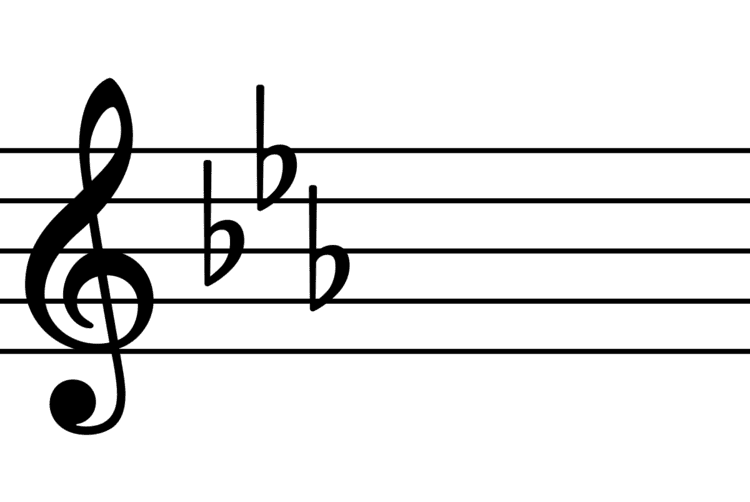Subdominant A♭ major | Dominant key B♭ major | |
 | ||
Parallel key E♭ minorenharmonic: D♯ minor | ||
The E♭ (E-flat) major scale consists of the pitches E♭, F, G, A♭, B♭, C, and D. Its key signature has three flats: B, E, A.
Its relative minor is C minor, and its parallel minor is E♭ minor (or enharmonically D♯ minor). D♯ major, its enharmonic, has two double-sharps, which makes it impractical to use.
E-flat major is often associated with bold, heroic music, in part because of Beethoven's usage. His Eroica Symphony, Emperor Concerto and Grand Sonata are all in this key. Also Beethoven's (hypothetical) 10th symphony is in the key of E-flat major. But even before Beethoven, Francesco Galeazzi identified E-flat major as "a heroic key, extremely majestic, grave and serious: in all these features it is superior to that of C."
Mozart chose E-flat major as the key of his slow movement for his two G minor symphonies: No. 25, and the famous No. 40.
Thus, three of Mozart's completed horn concertos and Joseph Haydn's famous Trumpet Concerto are in E-flat major, and so is Anton Bruckner's Fourth Symphony with its prominent horn theme in the first movement. Another famous heroic piece in the key of E-flat major is Richard Strauss's A Hero's Life. The heroic theme from the Jupiter movement of Holst's The Planets is in E-flat major. Mahler's vast and heroic Eighth Symphony is in E-flat, and his Second Symphony also ends in the key.
This is not to say that in the Classical period E-flat major was only for bombastic music with brass. "E-flat was the key [Joseph] Haydn chose most often for [string] quartets, ten times in all, and in every other case he wrote the slow movement in the dominant, B-flat." Or "when composing church music and operatic music in E-flat major, [Joseph] Haydn often substituted cors anglais for oboes in this period", and also in the Symphony No. 22 in E-flat major.
For Mozart, E-flat major was associated with Freemasonry, "E-flat evoked stateliness and an almost religious character."
